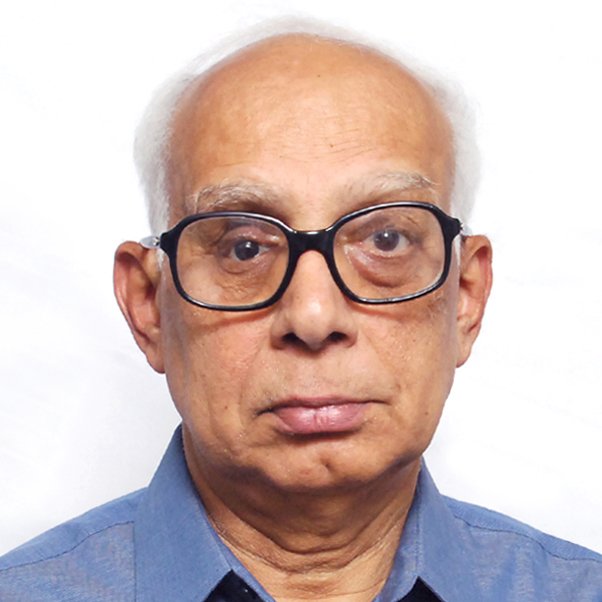“Stem cells applications are as important as publications�
April 21, 2014 | Monday | Interviews | By Rahul Koul Koul
“Stem cells applications are as important as publications�
Dr D Balasubramanian, director of research, L V Prasad Eye Institute, Hyderabad
Q: What kind of market exists in India for the stem cells?
As of today, most of the companies that work in this area are limited to cord blood banking. These operate with a hope that sooner or later they will find a market for it. There are only few who are actually doing anything beyond it as those which could give any methods or scaffolds so as to grow cells. There are two ways of growing cells, either by suspending the cells in culture or provide a biological surface such as collagen as well as synthetic polymers. Third has to do something with research which is the path less trodden by the companies. There is a company in Chennai that gives dental pulp and the Reliance Life Sciences in Mumbai says it can remove limbal cells, culture these and give back. So we can say that there are two types of companies: Storage and banking; Cell culture provision for researchers and clinicians. Very few companies are actually involved in research by themselves. I think a good example is Bangalore based Stempeutics which interacts with clinicians and scientists, providing them with technical support. This is by and large the kind of stem cell we have here in India.
I think there will be growth other than banking. Stem cells might diversify into handling cells or providing materials. New technologies have come. I have talked about gene repair technologies (repair of a mutant gene using new techniques). I am sure may be the forward looking companies will become partners. Here again the market size is not going to be large because remember that there are only few standard of care technologies available as per guidelines.
Q: Nanobiotech and stem cells have generated much hope. How do you look at it?
The market for both is rather poor. I am afraid neither in nano nor in the stem cells, we have been able to achieve much. There are no start ups coming up and besides that the technology development is far too less. There is a government appointed nano-mission focused mostly on laboratory research but less on translation or applications. Applications as publications are very important. People compare biotech with IT but there is a disconnect here. It may be bigger than IT in potential applications but translation into application on large scale in real life has not happened.
Q: How do we compare it with the biotech industry?
A look at the biotech industry where we talk about vaccines where state as well as central governments pitched in their support whether UP. AP. Karnataka, or Maharashtra. What do biotech parks have to offer. Space incubation, tax benfits, infrastructure. Such things have been evolving here. Today when we say the industry is worth $ 5 billion, we are under estimating it. It would be more than 15 $ billion. Then there are companies that have invested both in research and biosimilars. All of it comes under biotech. I don't think the same pathway exists at the moment for nano. I don't see it because until and unless nano shows large scale technically applicable thing.
Biotech of course covers an entire spectrum for GM crops to biosimilars, vaccines and medicines. Nano has even much wider reach than that. It has material science, chemistry, micro-fludics and nano-fludics. But it has to compare with parts of world that are advancing such as in far-east Japan, China and South Korea to US in west. Compared to that, the stem cell market here is miniscule.
Q: Are the guidelines now crystal clear?
Any sort of clinical trial involving a device or new medicine, you have to provide the entire dossier and see you want to go to clinicians. Because of variety of issues not related to the stem cells at all, there has been quite a bit of time taken in the DCGI to clear proposal after proposal. Infact, it came to a situation where there was a big period of lull that lead to taking out of clinical trials from India because you apply and nothing happens. DCGI was still formulating guidelines based on difficulties that came in its way. But the fact of the matter is that it takes lot of time by the date of applying, it might take one or two years actually. And then manufacturing will not take one day.
Q: Where are trials shifting to? What should we do?
These will continue to be concentrated largely in Asia. I don't think these will go to the Latin America because of cheap option here. The criteria are the large populations, diversity numbers and being little more proactive in dealings. I think we need to put our act together before business moves away from India. Because one fellow doesn't follow the rules doesn't mean every company shall be doubted. Unfortunately one or two examples have affected the clinical trial business. This is true of stem cell trials and companies in market.
Q: What kinds of activities are being undertaken at LV Prasad Eye institute currently?
The facilities for stem cells are excellent and we have been supported by the DBT and ICMR equally. We concentrate only on eye care. Thanks to the DBT initiative in 2001, we began to look at making the corneal epithelium by removing the damaged cornea surface and transplanting the cultivated limbal cornea epithelium. Now for retina, we can also do the induced pluripotent cells culture. You can actually take the patients skin cells to make the pluripotent cells. Ours is completely translational and correction of genetic disorders through Crispr is already happening at our institute. Gene correction and its application to damaged tissue have a very long way to go.










